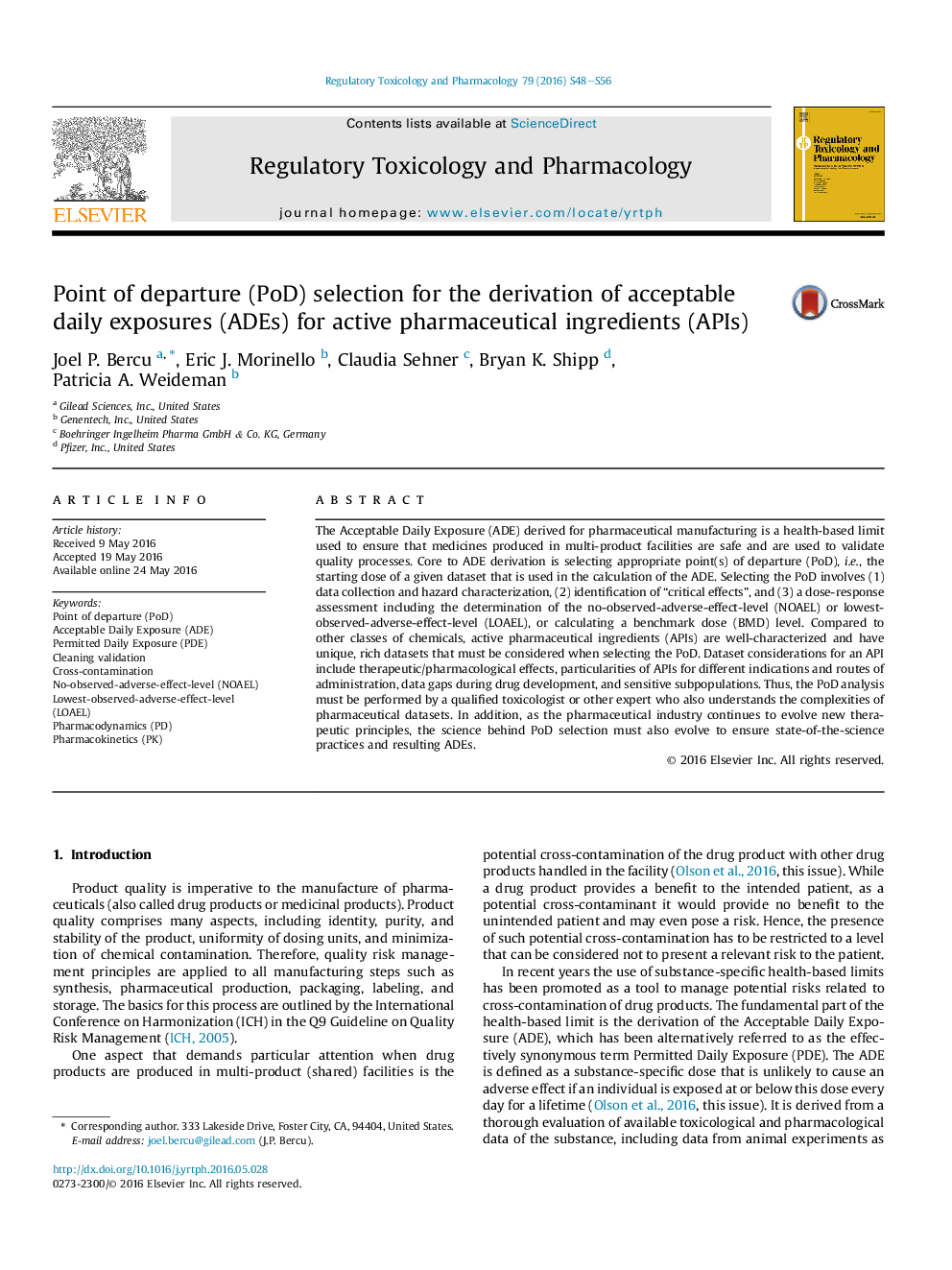| Article ID | Journal | Published Year | Pages | File Type |
|---|---|---|---|---|
| 2592280 | Regulatory Toxicology and Pharmacology | 2016 | 9 Pages |
•The PoD is an adopted practice for toxicological risk assessment and critical for deriving the ADE.•The PoD selection involves evaluating all the toxicological and pharmacological data and identifying the critical effect.•This manuscript discusses the unique considerations for selecting a PoD for pharmaceuticals.
The Acceptable Daily Exposure (ADE) derived for pharmaceutical manufacturing is a health-based limit used to ensure that medicines produced in multi-product facilities are safe and are used to validate quality processes. Core to ADE derivation is selecting appropriate point(s) of departure (PoD), i.e., the starting dose of a given dataset that is used in the calculation of the ADE. Selecting the PoD involves (1) data collection and hazard characterization, (2) identification of “critical effects”, and (3) a dose-response assessment including the determination of the no-observed-adverse-effect-level (NOAEL) or lowest-observed-adverse-effect-level (LOAEL), or calculating a benchmark dose (BMD) level. Compared to other classes of chemicals, active pharmaceutical ingredients (APIs) are well-characterized and have unique, rich datasets that must be considered when selecting the PoD. Dataset considerations for an API include therapeutic/pharmacological effects, particularities of APIs for different indications and routes of administration, data gaps during drug development, and sensitive subpopulations. Thus, the PoD analysis must be performed by a qualified toxicologist or other expert who also understands the complexities of pharmaceutical datasets. In addition, as the pharmaceutical industry continues to evolve new therapeutic principles, the science behind PoD selection must also evolve to ensure state-of-the-science practices and resulting ADEs.
